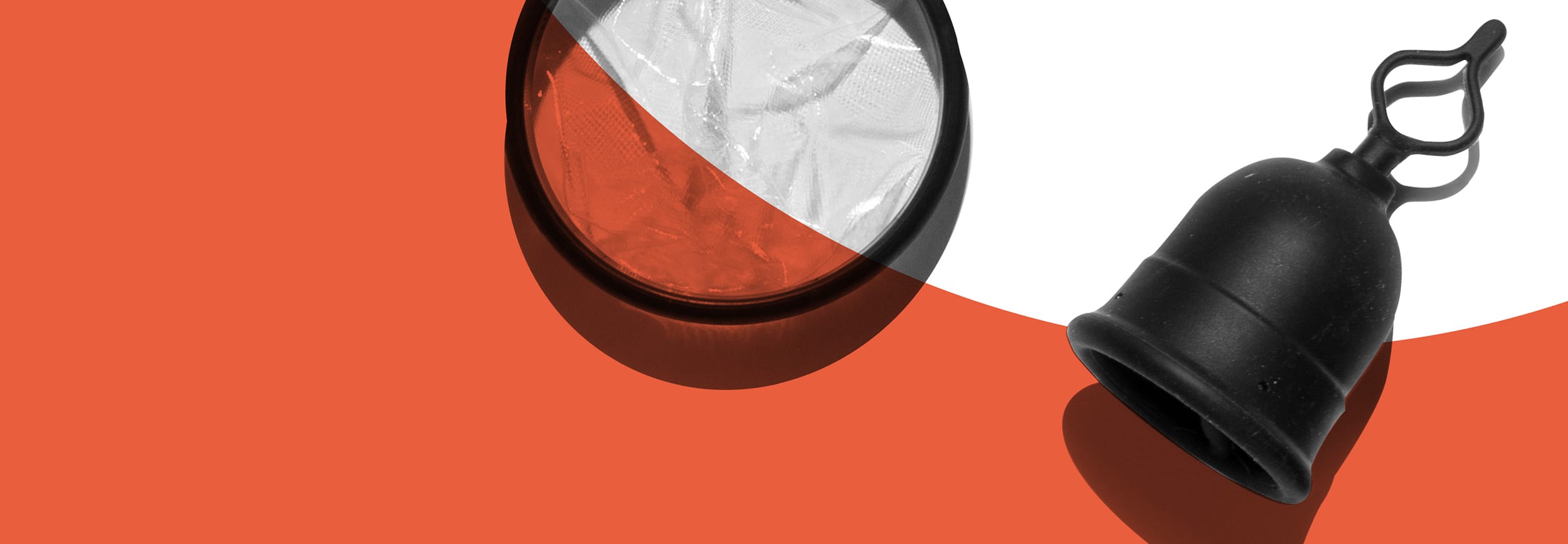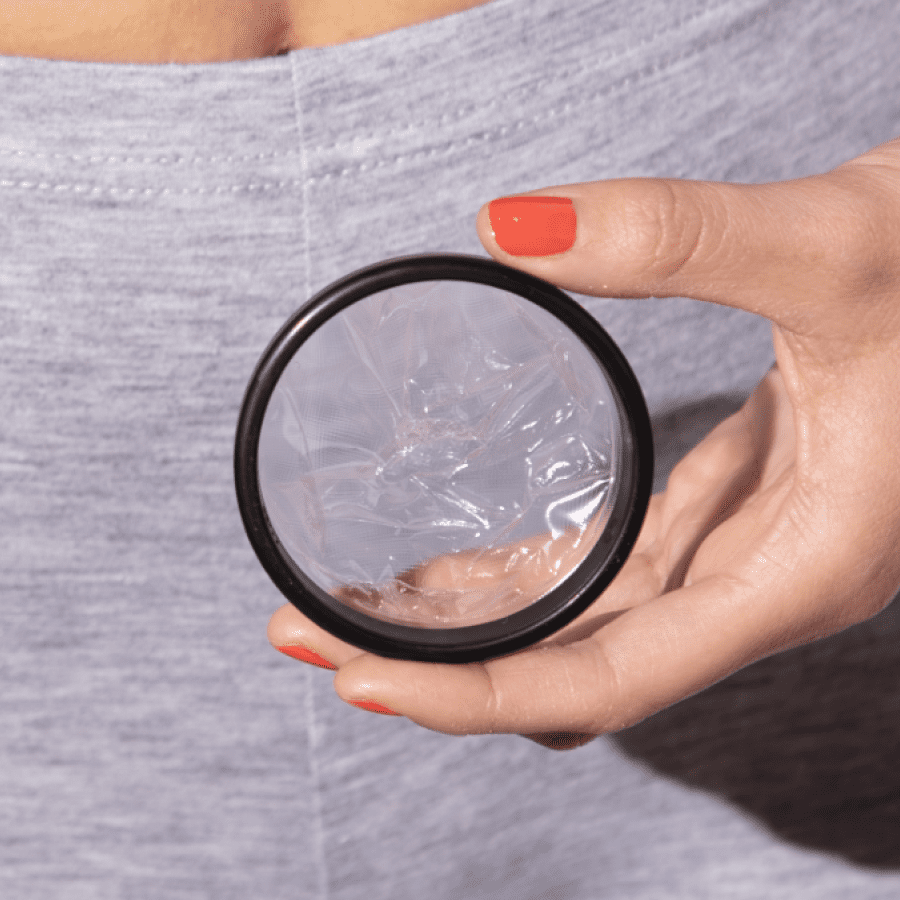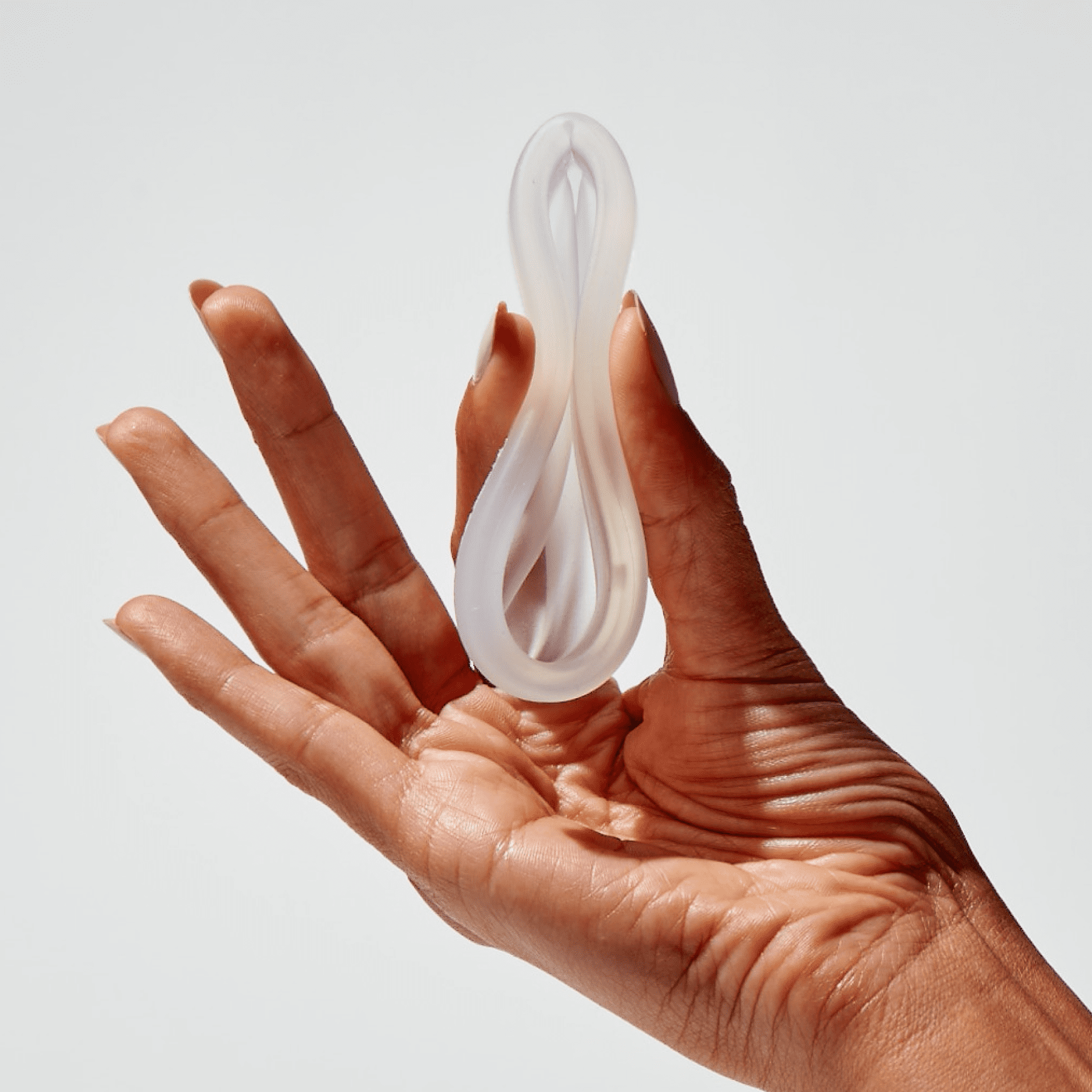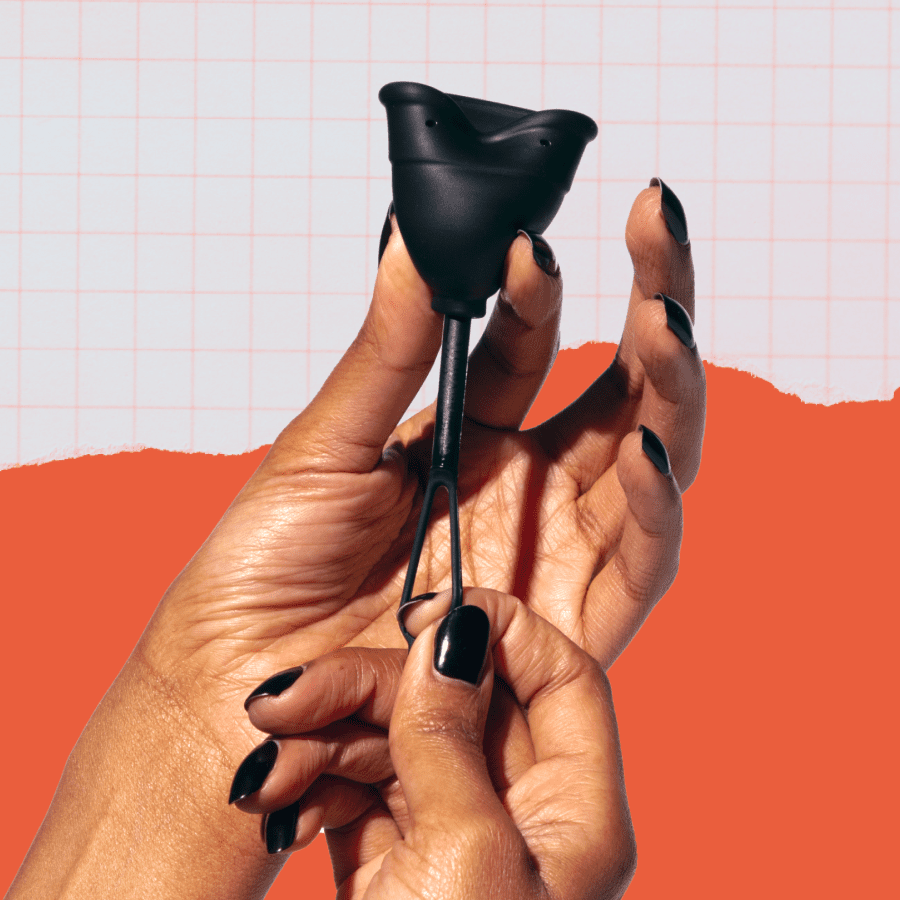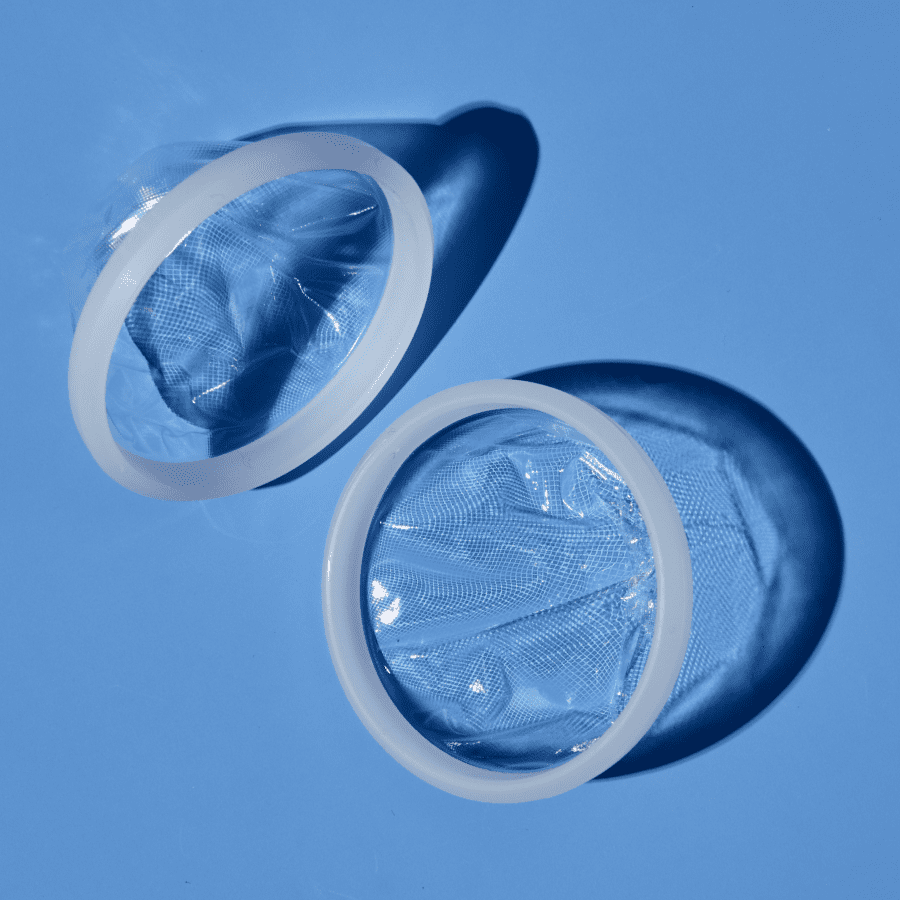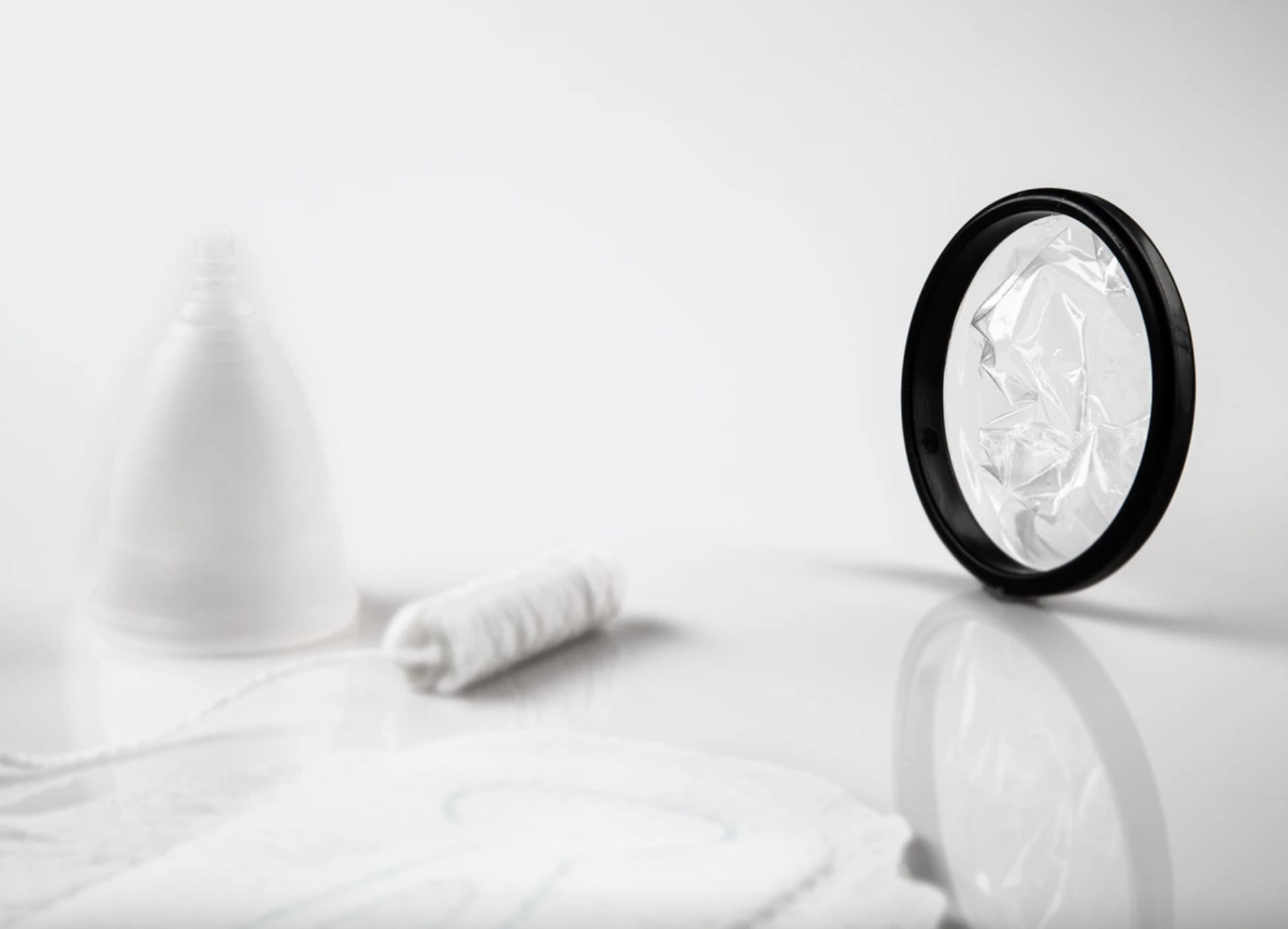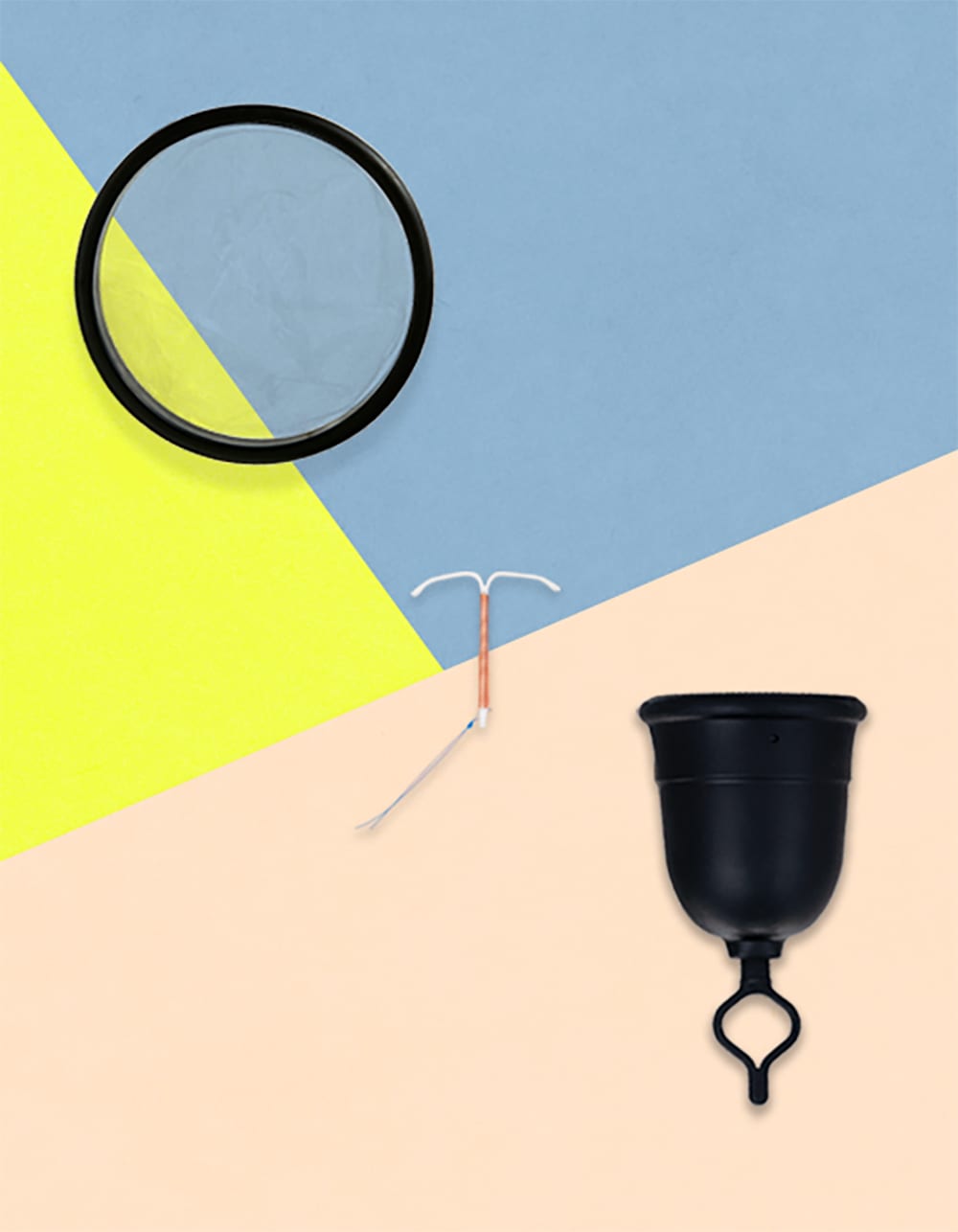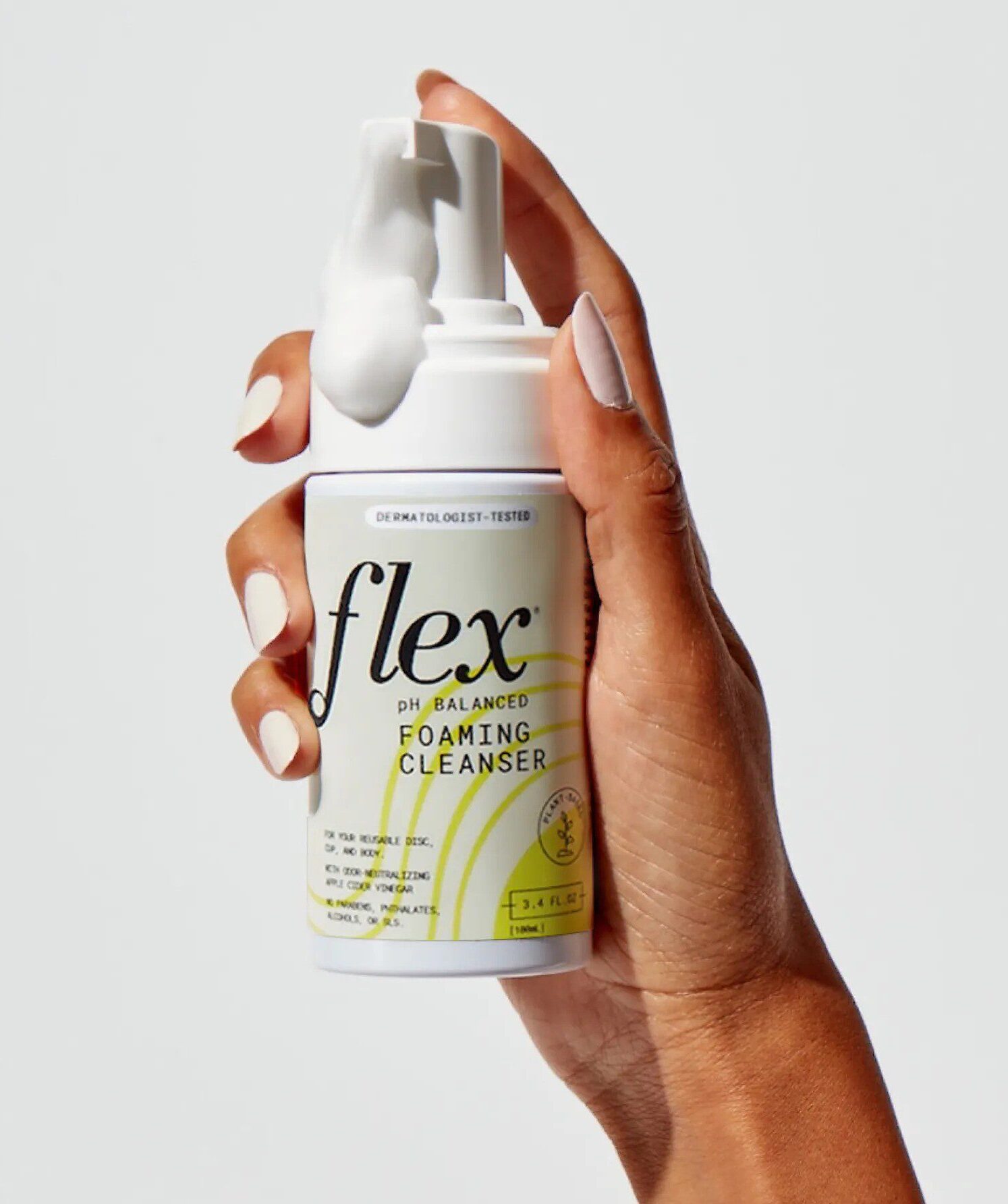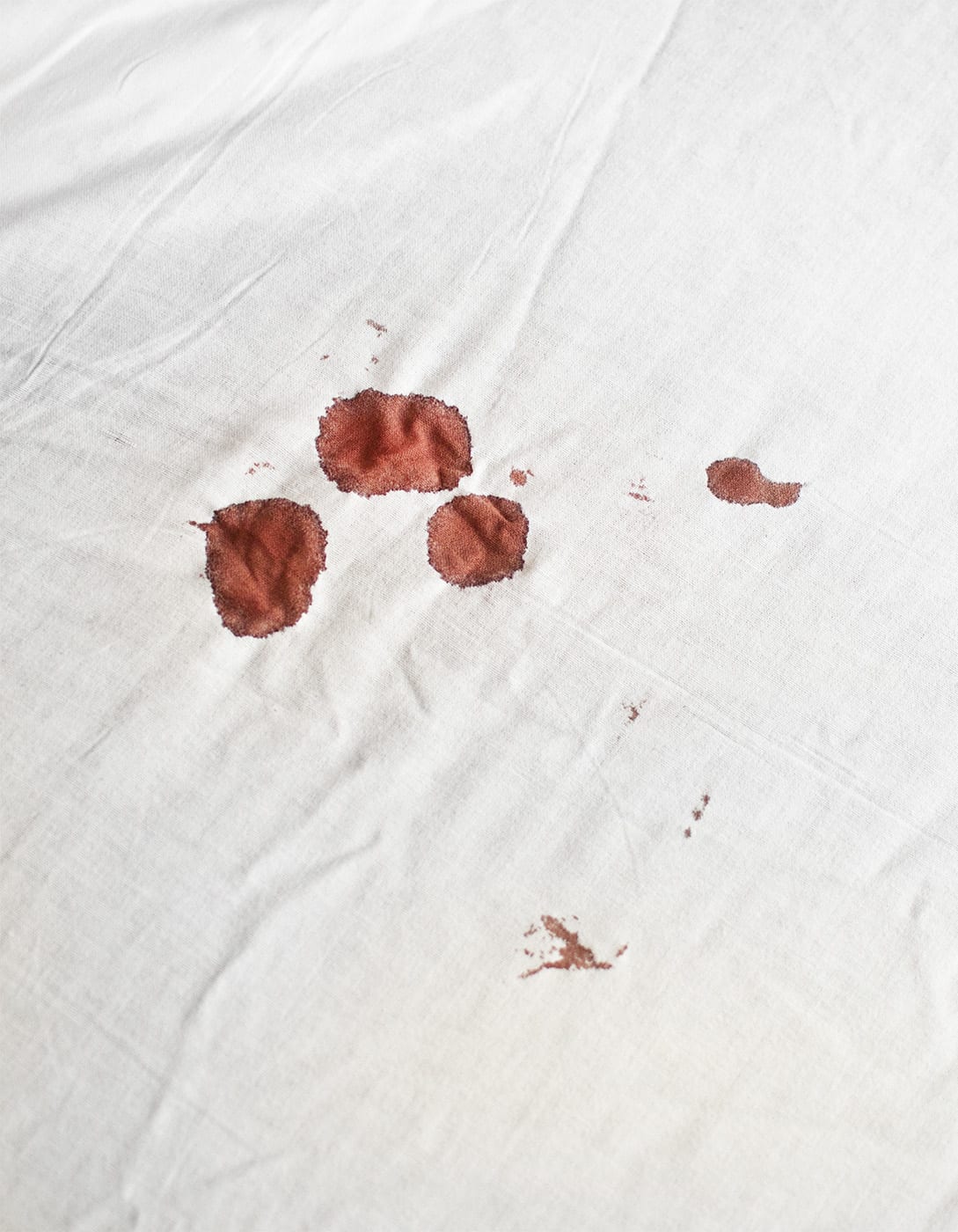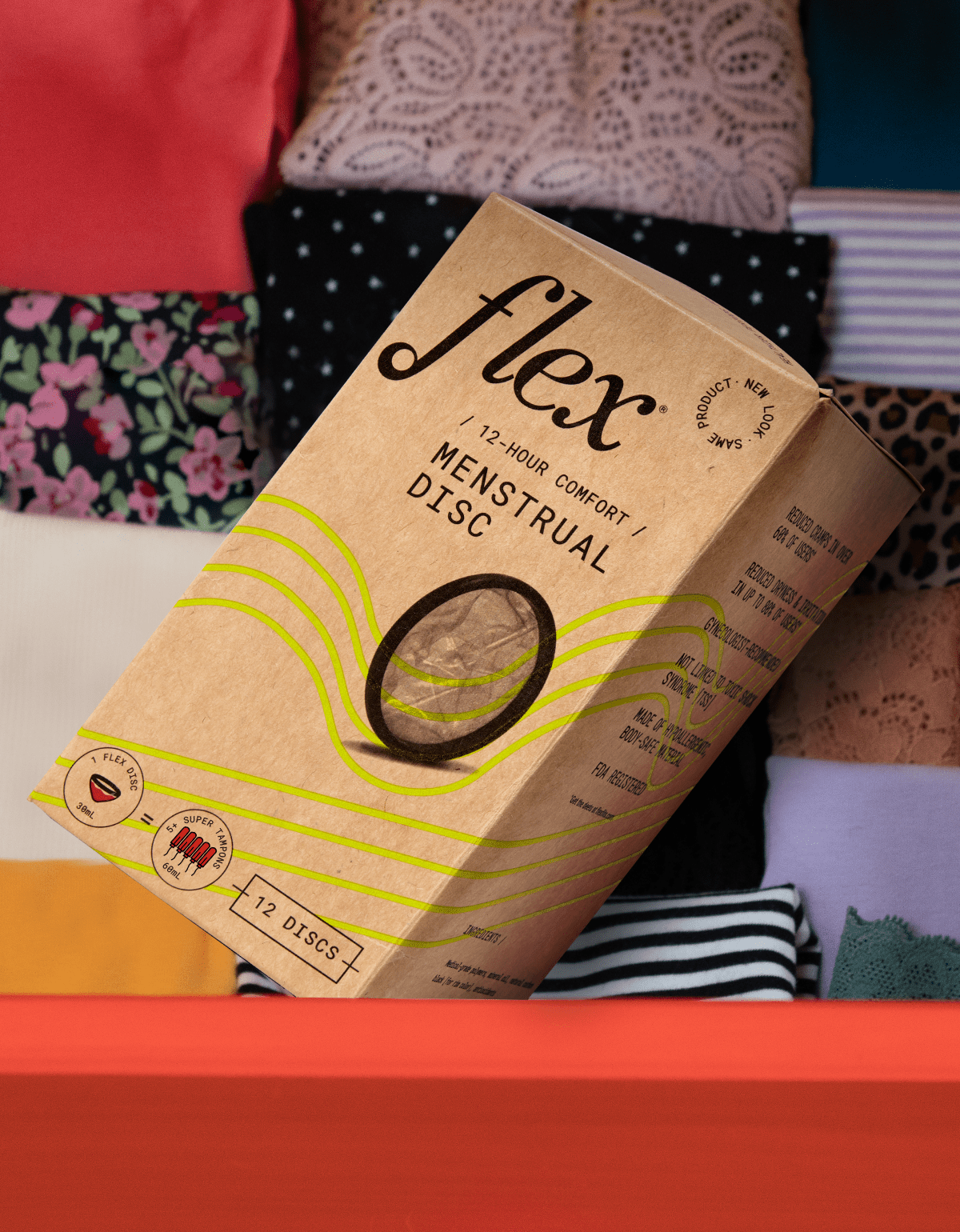The highlights:
- A menstrual disc sits in the vaginal fornix, at the widest part of your vagina and the base of your cervix. On the other hand, a menstrual cup is placed in the vaginal canal
- A menstrual cup has a bell-shaped design. A menstrual disc has a flat-fit design that looks more like a shallow bowl or dish
- Both menstrual discs and menstrual cups collect your period blood, rather than absorbing it and work for light flow and for heavy periods just as well
- Period discs are held in place thanks to your pubic bone; menstrual cups are kept in place with suction
- Cups are always reusable, whereas menstrual discs are either reusable or disposable (single-use)
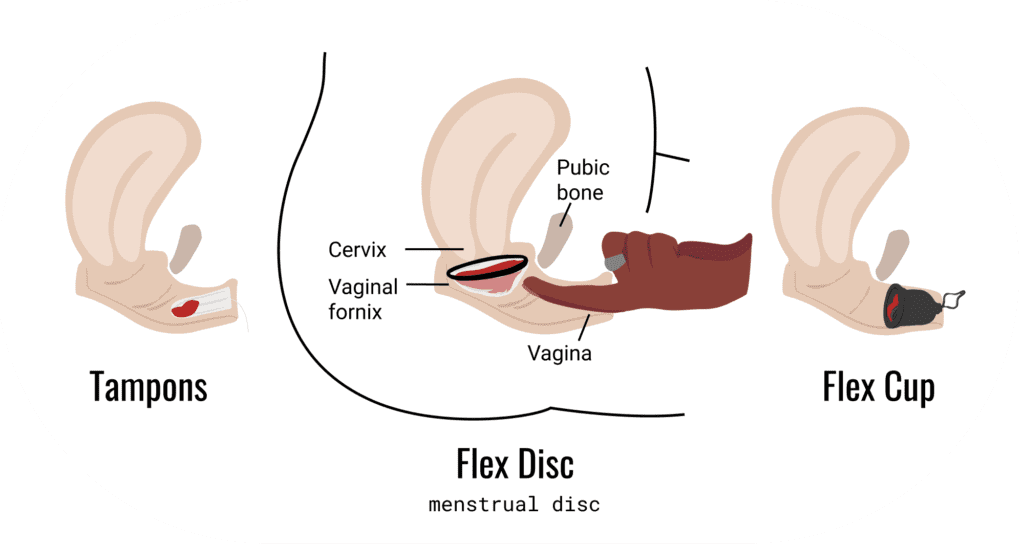
The full read:
Calling a menstrual disc and a menstrual cup the same product would be like equating eyeglasses to contact lenses. Sure, both of them do correct your vision, but they’re totally different products that are used in different ways.
Both period cups and period discs are period products designed to collect menstrual fluid. However, their designs and ways of working in the body are quite different. Read on to learn the key differences between a menstrual disc and a menstrual cup. We’ll cover how they are used, what materials they’re made from, and what activities you can do with each product.
Menstrual cup vs. disc placement
A menstrual disc sits in the vaginal fornix, which is at the base of your cervix. This area is the larger part of the vaginal canal, which is why the disc looks wider than a cup.
Period cups, on the other hand, sit in the narrower, lower portion of your vagina—the vaginal canal. There are more nerve endings in the vaginal canal than there are in the vaginal fornix. This explains why some users find period discs to be more comfortable than cups.
If you’re familiar with tampons, both tampons and period cups sit in approximately the same position in the vagina. With a period cup, you have more control over how far up the product is placed than you would with applicator tampons. This is because you use your fingers to insert and place the period cup in the right position for your body.
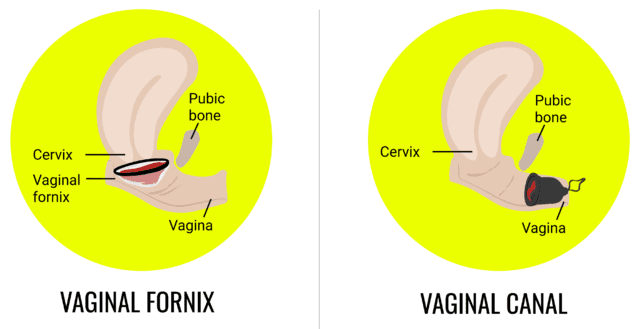
How each product works: Different mechanisms
A period disc stays “propped up” within the vaginal fornix thanks to the muscular vaginal walls and the pubic bone. The fornix is the widest part of your vagina. It is located at the end of the vaginal canal, surrounding your cervix.
There are two sides of the fornix, called the posterior (rear) and anterior (front) fornices.
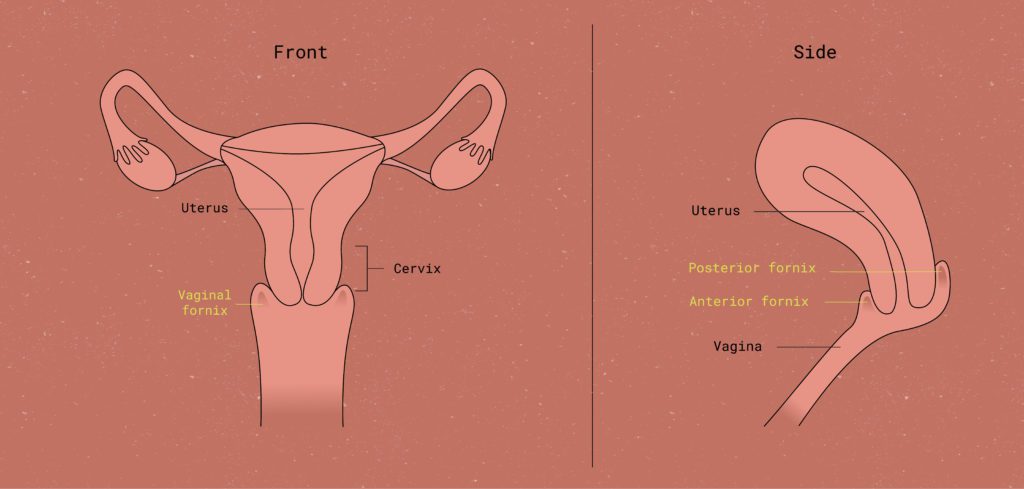
Your pubic bone works like a shelf. You insert the disc at an angle, down and far back as possible so that it covers your cervix. Once the inserting side of the disc is as far back as possible, tuck the front-facing rim behind your pubic bone with your finger.
When properly inserted, your period disc’s back rim rests in the posterior fornix, and the front behind the pubis pelvic bone.
When it’s time to remove your disc, you just use a clean finger to hook the front rim of the disc. Then slowly “untuck” it from behind the pubic bone, and carefully pull it out.
In contrast, a period cup uses light suction to stay in place (plus a little of the strength of the surrounding vaginal muscles). When it “pops” open in the vaginal canal, the sides of the cup create a seal against the vaginal walls. The seal prevents leaks and keeps the cup in place. To remove a period cup, you have to break the suction seal first by pinching the base of the cup.
With Flex Cup, breaking the seal is as easy as pulling down on the patented pull-tab. For the Flex cup, we designed the stem of the cup to break the seal on removal, so it could work similarly to a tampon for greater ease of use and a less messy removal. Flex is an excellent cup for beginners and for people with impaired dexterity. However, If you don’t own a Flex Cup, pulling the stem of your menstrual cup without breaking the suction first is not recommended.
Period cup vs. disc insertion
To insert a period disc, pinch it in half, and insert it into the vagina with two clean fingers. Then use a single finger to push it down and as far back as possible into the vaginal fornix. Then, tuck it behind your pubic bone by pushing the front-facing rim of your disc up and back.
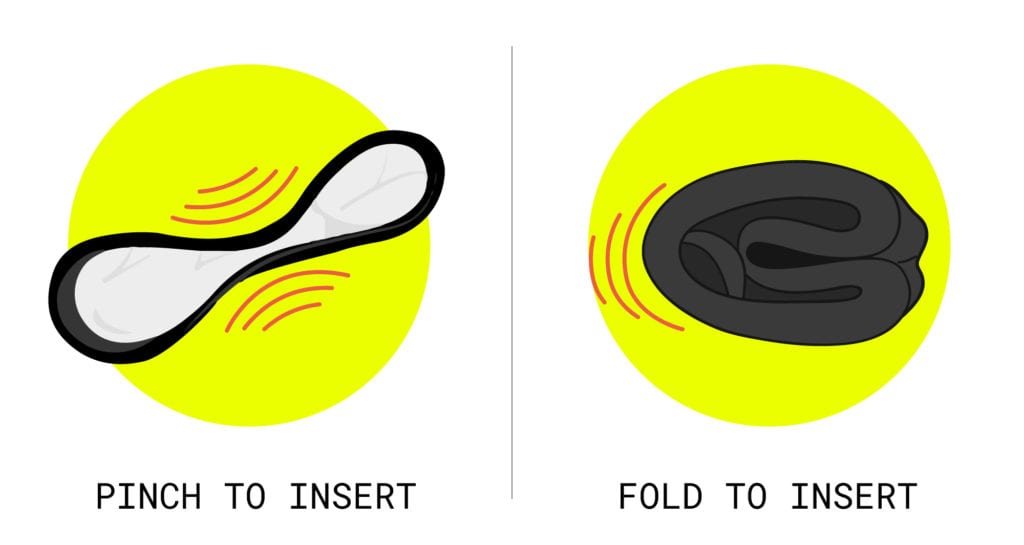
Inserting a period cup requires folding (rather than pinching) as the first step. There are several folding methods you can try, including the most common folds: punchdown fold, the C-fold, and the 7-fold.
Once you’ve mastered your fold, insert the folded cup into your vaginal canal with clean fingers. As soon as it’s in a comfortable position, make sure the rim of the cup is opened up all the way (should make a perfect circle when fully open). Some users like to rotate their cup slightly to help it create a really good seal with the vaginal walls, to help with menstrual cup efficacy. You may also run your middle finger around the rim of your cup to ensure it’s completely unfolded.
For both, period cups and period discs, there is a learning curve for insertion and removal.
Watch the difference in menstrual disc vs cup insertion in these two informative videos:
Menstrual discs are disposable or reusable; menstrual cups are only reusable
While all menstrual cups are reusable, discs are available in either reusable or disposable versions.
If you want to create as little waste as possible, go with a Flex reusable period disc or a period cup. They’re made with medical-grade silicone and hold up for years (so long as you take good care of them and follow proper use).
Discs and reusable menstrual cups must be emptied and washed before reinsertion. They should also be boiled every month at the end of your period to completely disinfect them until next use.
For daily washes, we recommend using a mild soap that won’t damage the silicone. Our favorite? Flex Foaming Cleanser, designed specifically for cleansing silicone menstrual cups and discs.
Disposable period discs, like the original Flex Disc, are a more convenient and travel-friendly option for some menstruators. Since they are single-use, you don’t have to worry about cleaning your disc in a public restroom. Just dispose of your used disc and insert a new one.
Single-use products aren’t as sustainable as reusable products. However, disposable menstrual discs like Flex Disc still create 60% less waste than traditional period products, like applicator tampons or pads. This is because you can wear your disc for up to 12 hours, much longer than a pad or tampon.
Longer wear = fewer products used each period.
Sex on your period: Can you have sex with a menstrual disc?
A period disc doesn’t block the vaginal canal. This makes it possible to have mess-free, penetrative period sex while wearing one. It’s unlikely that either you or your partner will feel the disc, thanks to its positioning in the vaginal fornix.
The same is not true for a menstrual cup. Because cups sit inside the vaginal canal, they block anything else from entering. Therefore, you’ll need to remove your cup before having penetrative sex.
Non-penetrative sex is still on the table with either product!
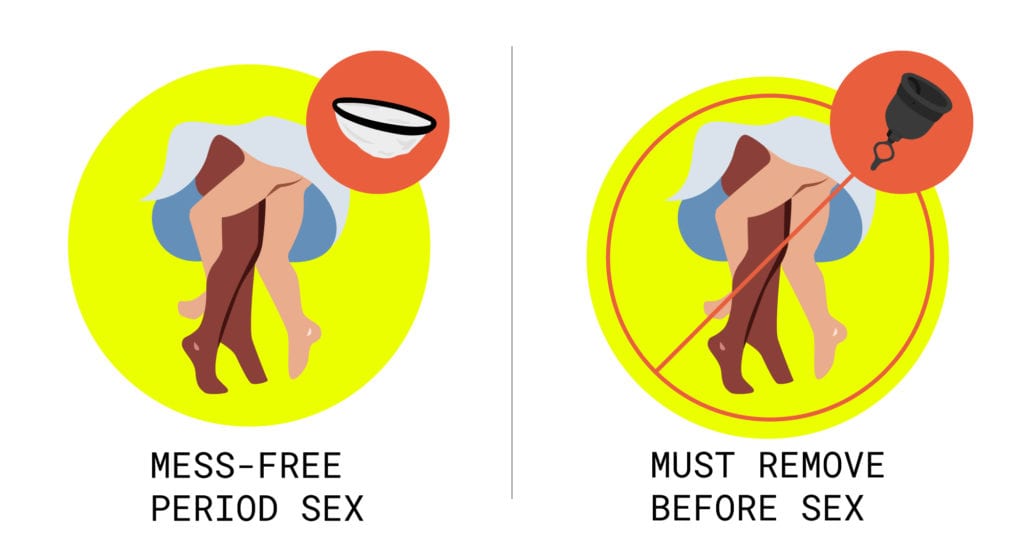
Menstrual discs vs cups: Different materials
Disposable menstrual discs are made from body-safe polymers—including Flex Disc, which is made from a medical-grade polymer. Medical-grade polymers are FDA-regulated materials used in many types of medical devices, including surgical tools.
Menstrual cups and reusable menstrual discs are usually made from medical-grade silicone. Some brands, however, use different materials, such as rubber or latex. Both Flex Cup and Flex Reusable Disc are made with 100% medical-grade silicone.
The medical-grade silicone and medical-grade polymers used in Flex products are biologically inert. Biologically inert materials do not interact or cause a reaction on human tissue, unlike a material like cotton, which is porous. Both cups and discs made with these materials are completely body-safe. Because they’re biologically inert, they do not host toxic bacteria or alter your vaginal pH.
All Flex period products are FDA-registered, hypoallergenic, and are not made with BPAs, PFAs, phthalates, or natural rubber latex.
Menstrual Disc vs Cup: Key Takeaways:
While both menstrual discs and cups are innovative period care solutions, they offer distinct advantages for different needs. Discs sit in the vaginal fornix and work with the natural shape of your fornix, while cups create a seal in the vaginal canal. A key difference is that discs offer a unique opportunity: the ability to be worn during intimate moments for no-mess period sex, whereas cups need to be removed.
Both options come in reusable versions made from medical-grade silicone, though discs also offer disposable options for added convenience. Discs generally provide a more comfortable fit due to their placement in an area with fewer nerve endings, while cups offer the familiarity of sitting in a similar position to tampons.
Menstrual discs and cups typically have higher capacity than traditional tampons and can be worn for up to 12 hours, making them ideal for overnight use. Another key difference? Menstrual disc overflow can be dumped mid-wear, whereas cups must be removed in order to be emptied.
Additionally, both options are eco-friendly and are a great way to reduce waste compared to disposable tampons or pads. It’s important to note that both options may require some practice and patience to master the insertion and removal process, but many users find them to be more convenient and cost-effective in the long run. Ultimately, the choice between a disc and a cup depends on individual preferences and lifestyle needs.
If you have any medical conditions such as pelvic dysfunction or other conditions affecting your pelvic area, talking to your doctor about the period care options (pads, leakproof period underwear, etc) that make sense for you and your specific needs is always a great idea to get started.
Whether you choose Flex Disc or Flex Cup to manage your period flow, both options provide up to 12 hours of protection and are made with body-safe materials that won’t disrupt your vaginal pH.
Have questions about Flex Cup, Flex Reusable Disc, or Flex Disc? Need help deciding which product is best for you? Our Flexperts are always available to chat: Just send us a message or email us at hello@flexfits.com
